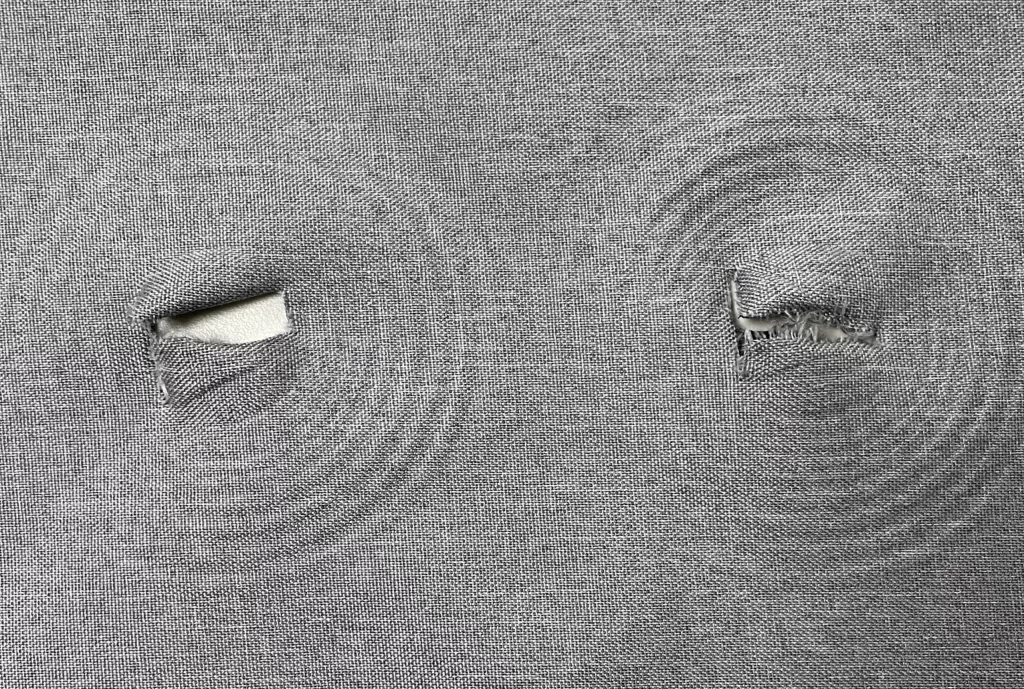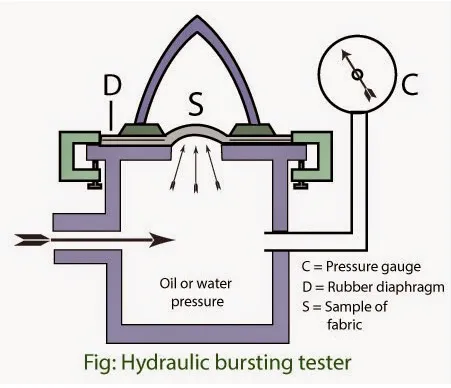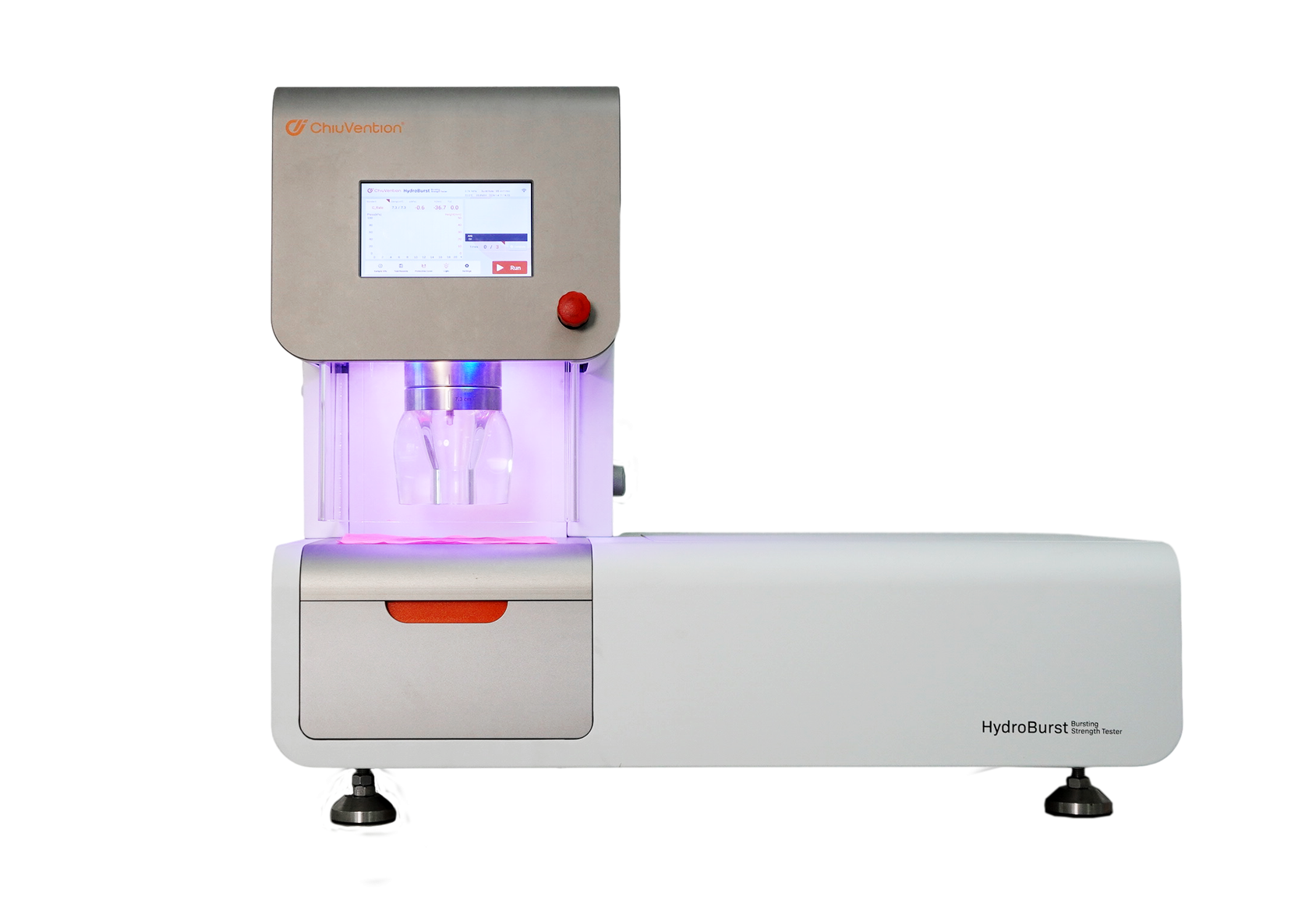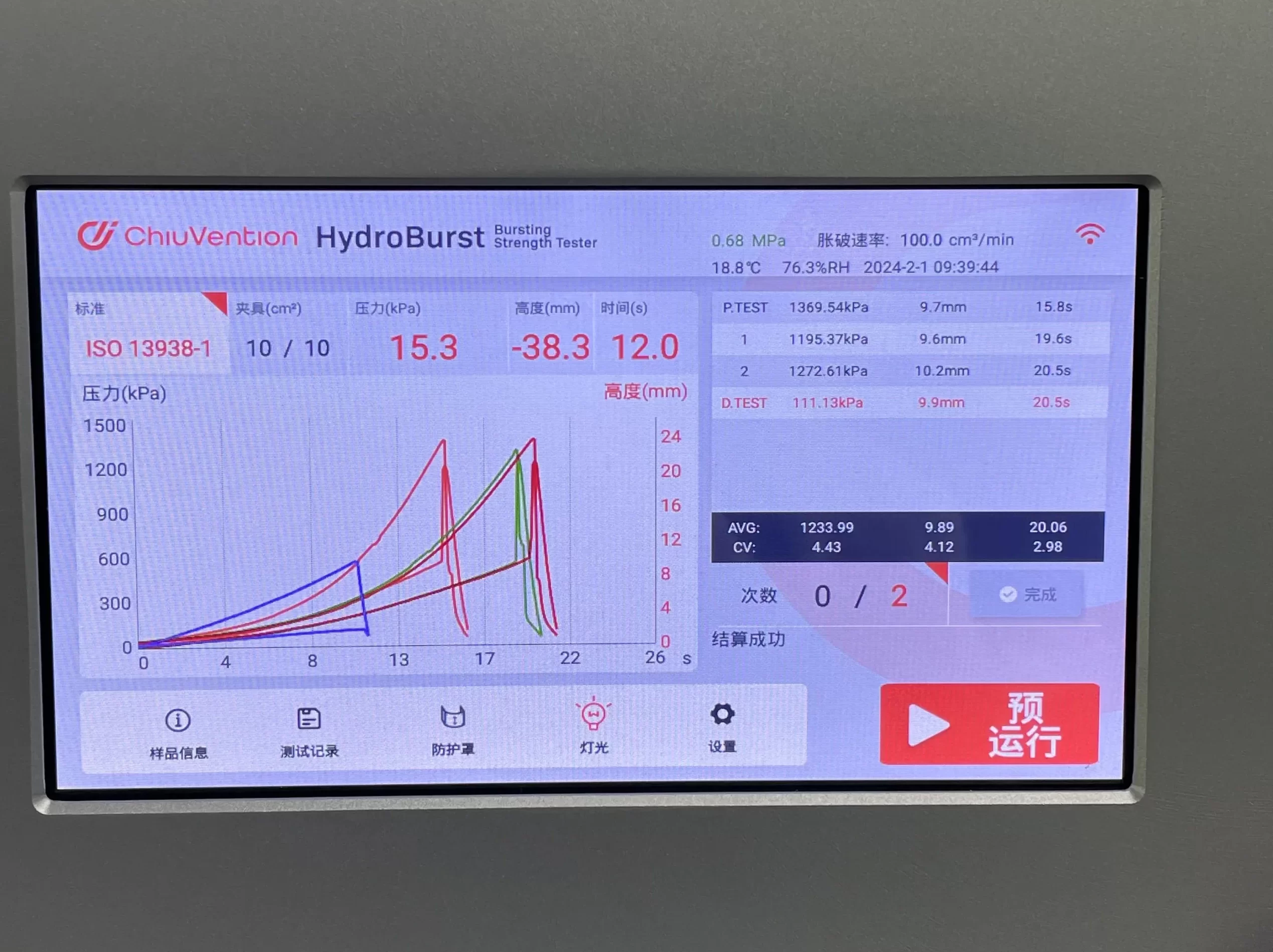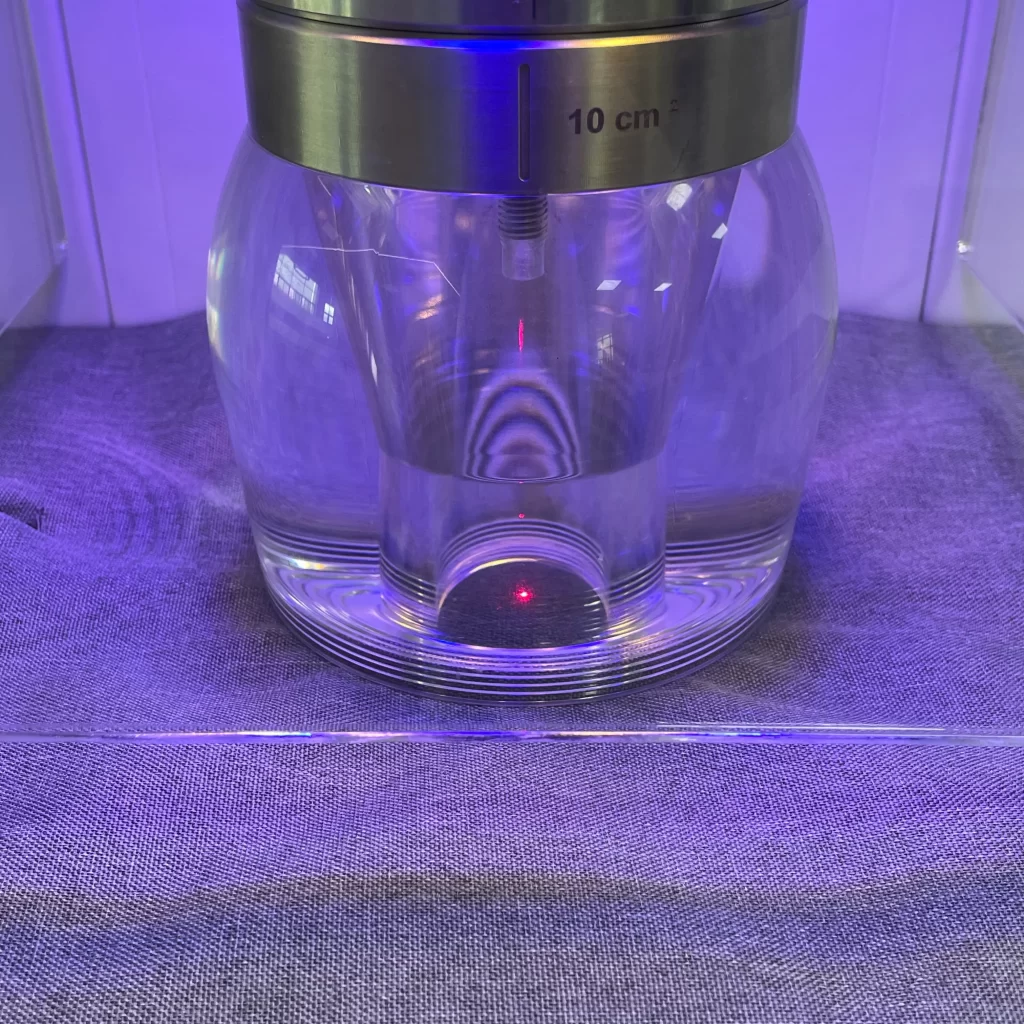What is water vapour permeability? The water vapour permeability test measures how well fabrics let…
Unraveling the Strength: Exploring the Power of Textile Bursting Strength Testing
Table of Contents
- Introduction
- Importance of Textile Bursting Strength Testing
- Understanding Textile Bursting Strength Testing
- Applications of Textile Bursting Strength Testing
- Advancements in Textile Bursting Strength Testing Technology
- Challenges and Limitations
- Best Practices for Textile Bursting Strength Testing
- Future Trends and Innovations
- Common Questions about Textile Bursting Strength Testing
Introduction
In the vast landscape of textile manufacturing, where quality reigns supreme, ensuring the integrity and durability of fabrics is an indispensable aspect. Among the arsenal of tests designed to assess the strength and resilience of textiles, bursting strength testing stands as a stalwart guardian, providing insights into a fabric’s ability to withstand pressure and stress. In this comprehensive exploration, we delve deep into the significance of textile bursting strength testing, its myriad applications across diverse industries, the technological advancements driving its evolution, and the challenges that accompany its implementation.
Importance of Textile Bursting Strength Testing
Ensuring Quality and Durability
At the heart of fabric bursting strength testing lies the pursuit of excellence in textile manufacturing. By subjecting fabrics to controlled pressure until they rupture, manufacturers gain invaluable insights into their structural integrity, ensuring that only the highest quality materials make their way into finished products. Whether it’s garments destined for the fashion runway or industrial fabrics engineered for rugged environments, bursting strength testing serves as a litmus test for durability and reliability.
Compliance with Industry Standards and Regulations
Across various sectors, from apparel to automotive to medical textiles, adherence to stringent quality standards is non-negotiable. Bursting strength testing plays a pivotal role in this realm, serving as a benchmark for compliance with industry regulations and safety standards. By certifying that fabrics meet or exceed specified bursting strength requirements, manufacturers instill confidence in their products and safeguard consumer well-being.
 Understanding Textile Bursting Strength Testing
Understanding Textile Bursting Strength Testing
Principles and Methods
At its core, bursting strength testing involves the application of hydraulic or pneumatic pressure to a fabric sample until it ruptures. The force required to achieve this rupture serves as a measure of the fabric’s bursting strength. Various testing methods exist, including the diaphragm method, ball burst method, and hydraulic method, each tailored to suit specific applications and material properties. Tje detailed bursting strength tester specifications can be shown on this page.
Factors Affecting Bursting Strength
The bursting strength of a fabric is influenced by a multitude of factors, ranging from yarn type and fabric construction to finishing treatments and environmental conditions. Understanding these factors is essential for interpreting test results accurately and optimizing fabric performance.
Applications of Textile Bursting Strength Testing
Apparel Industry: In the fast-paced world of fashion, where trends come and go, durability is a timeless attribute. Garments subjected to bursting strength testing are better equipped to withstand the rigors of everyday wear and tear, ensuring longevity and customer satisfaction. From denim jeans to activewear to intimate apparel, bursting strength testing plays a vital role in delivering garments that stand the test of time.
Automotive Sector: Within the automotive industry, where safety and reliability are paramount, textiles play a multifaceted role in interior components, upholstery, and airbag systems. Bursting strength testing of automotive textiles ensures compliance with safety standards, enabling manufacturers to produce vehicles that offer both comfort and protection to passengers.
Medical Textiles: In the realm of healthcare, where sterility and patient safety are of utmost importance, medical textiles undergo rigorous testing to ensure their efficacy and integrity. Bursting strength testing of surgical gowns, drapes, and wound dressings ensures that these critical materials can withstand the stresses of sterilization and use, providing reassurance to healthcare professionals and patients alike.
Advancements in Textile Bursting Strength Testing Technology
Automated Testing Systems: With the advent of automation, bursting strength testing has undergone a revolution, with modern testing equipment offering streamlined processes and enhanced efficiency. Automated systems not only expedite testing procedures but also minimize human error, ensuring reliable and reproducible results.
Digital Imaging Analysis: In recent years, digital imaging techniques have emerged as powerful tools for analyzing fabric deformation during bursting strength tests. By capturing high-resolution images of the fabric surface before, during, and after testing, digital imaging analysis provides invaluable insights into material behavior, enabling manufacturers to fine-tune their processes and enhance product performance.
Challenges and Limitations
Variability in Test Results: Despite advancements in testing technology, variability in bursting strength results remains a persistent challenge. Factors such as sample preparation, testing conditions, and operator technique can all influence test outcomes, necessitating robust quality control measures to ensure consistency and reliability.
Compatibility with Different Textile Materials: While bursting strength testing is widely employed across various industries, its applicability to different types of textiles can vary. Certain materials, such as knitted fabrics or nonwovens, may exhibit unique behavior that requires specialized testing methods or adaptations.
Best Practices for Textile Bursting Strength Testing
Calibration and Maintenance: Regular calibration and maintenance of testing equipment are essential to ensure accurate and reliable results. By calibrating instruments against certified standards and conducting routine maintenance checks, manufacturers can uphold the integrity of their testing processes and minimize measurement errors.
Standardization of Testing Procedures: Standardization plays a crucial role in ensuring consistency and comparability in bursting strength testing. By adhering to internationally recognized testing standards and protocols, manufacturers can facilitate cross-industry collaboration and benchmarking, driving continuous improvement and innovation.
Future Trends and Innovations
Integration of AI and Machine Learning: As the textile industry embraces digitalization, the integration of artificial intelligence (AI) and machine learning holds immense promise for enhancing bursting strength testing processes. By leveraging AI algorithms to analyze test data and predict material performance, manufacturers can optimize product development, reduce time-to-market, and unlock new opportunities for innovation.
Development of Portable Testing Devices: In an increasingly mobile world, the demand for portable and handheld testing devices is on the rise. Engineers and researchers are exploring the feasibility of miniaturizedand digitalbursting strength testers that offer on-the-go testing capabilities, enabling quality control checks to be performed directly on the production floor or in the field.
Common Questions about Textile Bursting Strength Testing
What is bursting strength testing?
Bursting strength testing is a standardized method used to measure the ability of a textile material to withstand pressure or force before it ruptures or bursts. This test evaluates the strength and integrity of fabrics by subjecting them to increasing hydraulic or pneumatic pressure until they rupture. The bursting strength is typically measured in units of pressure, such as pounds per square inch (psi) or kilopascals (kPa).
During the test, a circular or diaphragm-shaped fabric sample is clamped securely over an opening in a test fixture. Pressure is then applied gradually to the underside of the fabric sample using a hydraulic or pneumatic system. As pressure increases, the fabric stretches until it reaches its breaking point, at which it ruptures. The maximum pressure at which the rupture occurs is recorded as the bursting strength of the fabric.
Bursting strength testing is essential for evaluating the quality, durability, and performance of textiles across various industries, including apparel, automotive, medical, and industrial applications. It helps manufacturers ensure that their products meet or exceed specified bursting strength requirements, providing assurance of quality and reliability to consumers.
Why is bursting strength important for textiles?
Bursting strength is a critical parameter for textiles due to several reasons:
- Durability: Textiles often undergo various stresses during their lifecycle, including stretching, pulling, and pressure. Fabrics with higher bursting strength are more durable and can withstand these stresses without tearing or rupturing, ensuring longevity and performance.
- Quality Assurance: Bursting strength testing serves as a quality control measure for textile manufacturers. By assessing the fabric’s ability to withstand pressure, manufacturers can identify any weaknesses or defects in the material and take corrective actions to maintain consistent quality standards.
- Safety: In industries such as automotive and medical textiles, where safety is paramount, fabrics must meet stringent bursting strength requirements to ensure they can withstand the demands of their intended applications. Textiles with inadequate bursting strength may fail under pressure, posing risks to users’ safety.
- Product Performance: Bursting strength is directly related to the performance of textile products. For example, garments with higher bursting strength are less likely to tear or rip during wear, while industrial fabrics with high bursting strength can withstand harsh conditions without failing.
- Compliance with Standards: Many industries have specific standards and regulations governing the bursting strength of textiles. Compliance with these standards is essential for product certification and regulatory approval, enabling manufacturers to market their products with confidence.
In summary, bursting strength is important for textiles because it directly correlates with durability, quality, safety, performance, and regulatory compliance. By ensuring that fabrics meet or exceed specified bursting strength requirements, manufacturers can deliver products that meet consumer expectations and industry standards.
How is bursting strength measured?
Bursting strength is measured using a standardized testing procedure that involves subjecting a fabric sample to increasing pressure until it ruptures. The most common method for measuring bursting strength is the diaphragm method, which follows these steps:
- Sample Preparation: A circular or diaphragm-shaped fabric sample is cut to a specified size, typically using a template or cutting die. The sample should be representative of the material being tested and free from any defects or irregularities.
- Test Fixture Setup: The fabric sample is securely clamped over an opening in a test fixture, ensuring that it forms a tight seal around the edges. The test fixture is connected to a hydraulic or pneumatic system capable of applying controlled pressure to the underside of the fabric sample.
- Pressure Application: Pressure is gradually applied to the underside of the fabric sample using the hydraulic or pneumatic system. The pressure is increased at a constant rate until the fabric ruptures or bursts. During this process, the pressure and any corresponding changes in the fabric’s dimensions are monitored and recorded.
- Rupture Detection: The moment the fabric ruptures, the pressure at which it occurs is recorded as the bursting strength of the material. This value is typically expressed in units of pressure, such as pounds per square inch (psi) or kilopascals (kPa).
- Data Analysis: After testing, the recorded bursting strength value is analyzed to assess the fabric’s performance and suitability for its intended application. Any deviations from specified bursting strength requirements may indicate potential quality issues or areas for improvement in the manufacturing process.
Overall, bursting strength measurement involves subjecting a fabric sample to controlled pressure until it reaches its breaking point, providing valuable insights into the material’s strength and integrity. This standardized testing procedure helps ensure consistent quality and performance across various textile products and applications.
What factors affect bursting strength results?
Several factors can influence bursting strength test results, impacting the accuracy and reliability of the measurements. These factors include:
- Fabric Construction: The way the fabric is constructed, including factors such as weave pattern, knit structure, and thread count, can significantly affect its bursting strength. Fabrics with tighter weaves or knit structures tend to have higher bursting strength compared to looser constructions.
- Fiber Type and Quality: The type of fibers used in the fabric composition, as well as their quality and characteristics, can influence bursting strength. Natural fibers like cotton and silk may exhibit different bursting strength properties compared to synthetic fibers such as polyester or nylon.
- Fabric Thickness and Weight: Thicker and heavier fabrics generally have higher bursting strength due to their increased resistance to pressure. Thinner or lighter fabrics may have lower bursting strength and may be more prone to rupturing under pressure.
- Finishing Treatments: Chemical treatments applied to fabrics, such as dyeing, coating, or finishing agents, can alter their bursting strength. Some treatments may enhance or degrade the fabric’s strength, depending on the specific chemicals and processes involved.
- Sample Preparation: The method used to prepare fabric samples for testing can affect bursting strength results. Factors such as sample size, cutting technique, and edge sealing can introduce variability in test outcomes if not standardized properly.
- Testing Conditions: Environmental factors such as temperature, humidity, and testing speed can influence bursting strength measurements. Variations in testing conditions across different laboratories or testing equipment may lead to inconsistencies in results.
- Operator Technique: The skill and experience of the operator conducting the bursting strength test can impact the accuracy and repeatability of measurements. Proper training and adherence to standardized testing procedures are essential to minimize operator-induced variability.
- Instrument Calibration: The calibration of testing equipment, including pressure gauges and hydraulic systems, is critical for ensuring accurate and reliable bursting strength measurements. Inaccurate calibration can lead to erroneous results and undermine the validity of the testing process.
By understanding and controlling these factors, textile manufacturers can optimize their bursting strength testing procedures to obtain consistent and reliable results, enabling them to assess and improve the quality and performance of their products effectively.
What are some common standards for bursting strength testing?
Several common standards and methods are used for bursting strength testing in the textile industry. These standards provide guidelines and procedures for conducting the test and interpreting the results consistently. Some of the most widely recognized bursting strength testing standards include:
- ASTM D3786 – Standard Test Method for Bursting Strength of Textile Fabrics**: This ASTM International standard specifies the procedure for determining the bursting strength of woven or knitted fabrics using a hydraulic bursting tester.
- ISO 13938 – Textiles – Bursting Strength of Fabrics: Issued by the International Organization for Standardization (ISO), this standard outlines the method for determining the bursting strength of fabrics using hydraulic or pneumatic bursting strength testers.
- BS EN ISO 13938 – Textiles – Bursting Strength of Fabrics**: This European standard is based on the ISO 13938 method and provides guidelines for measuring the bursting strength of fabrics in accordance with European norms.
- ASTM D3787 – Standard Test Method for Bursting Strength of Textiles – Diaphragm Bursting Strength Tester Method: Another ASTM International standard, ASTM D3787, describes a specific method for determining the bursting strength of textiles using a diaphragm bursting strength tester.
- ISO 3303 – Rubber or Plastics – Determination of the Resistance to Bursting (Ball Burst Test): While primarily intended for rubber or plastic materials, this ISO standard outlines a method for determining bursting strength using a ball burst test apparatus.
- ASTM F2054 – Standard Test Method for Burst Testing of Surgical Gowns, and Surgical Drapes and Drapery Material: Specifically tailored for medical textiles, ASTM F2054 provides guidelines for testing the bursting strength of surgical gowns, drapes, and drapery materials used in healthcare settings.
These standards establish uniform testing procedures, equipment requirements, and result calculation methods, ensuring consistency and comparability of bursting strength measurements across different laboratories and manufacturers. Adherence to these standards enables textile producers to assess the quality and performance of their products accurately and reliably, facilitating compliance with industry regulations and customer requirements.
As we navigate the intricate landscape of textile bursting strength testing, one thing remains abundantly clear: its impact reverberates across industries, shaping the quality, safety, and performance of countless products. By embracing innovation, standardization, and best practices, manufacturers can harness the full potential of bursting strength testing to deliver fabrics that not only withstand the test of time but also elevate the standards of excellence in the textile industry.

